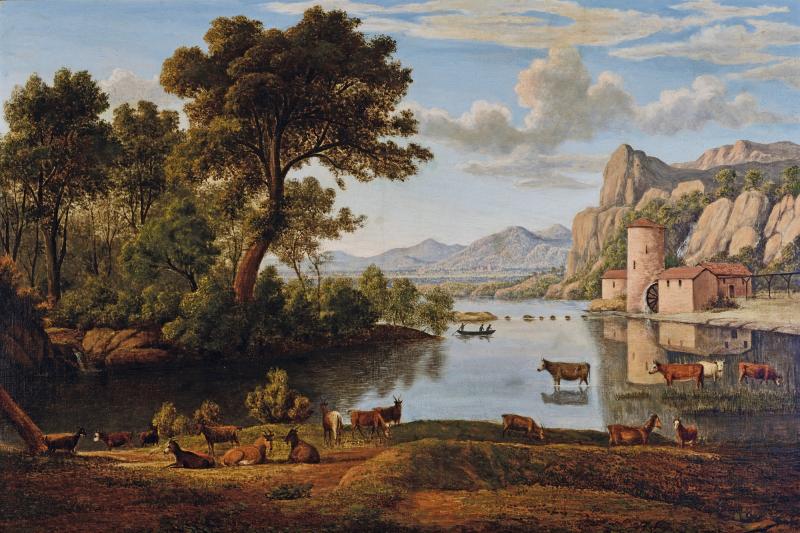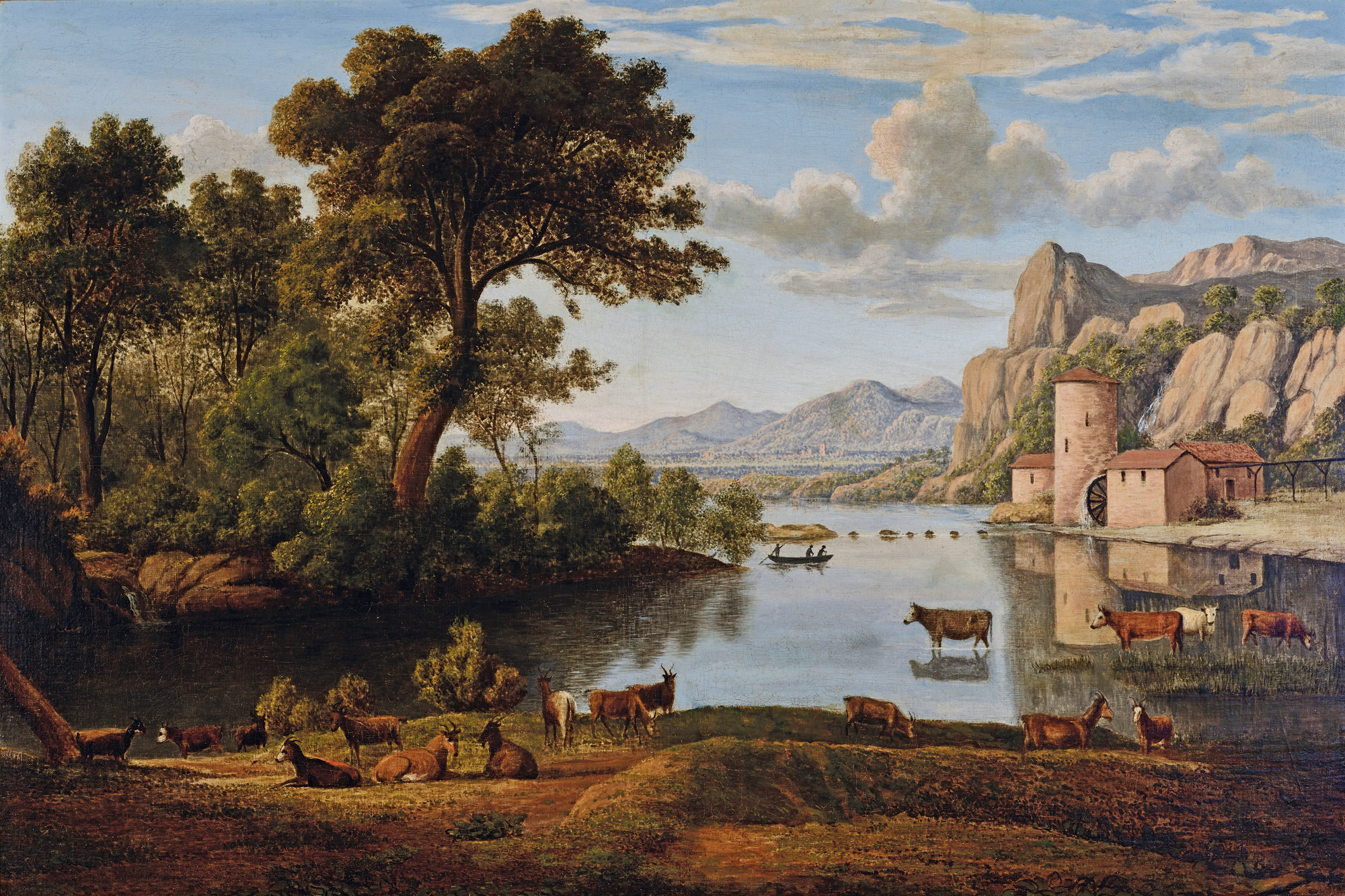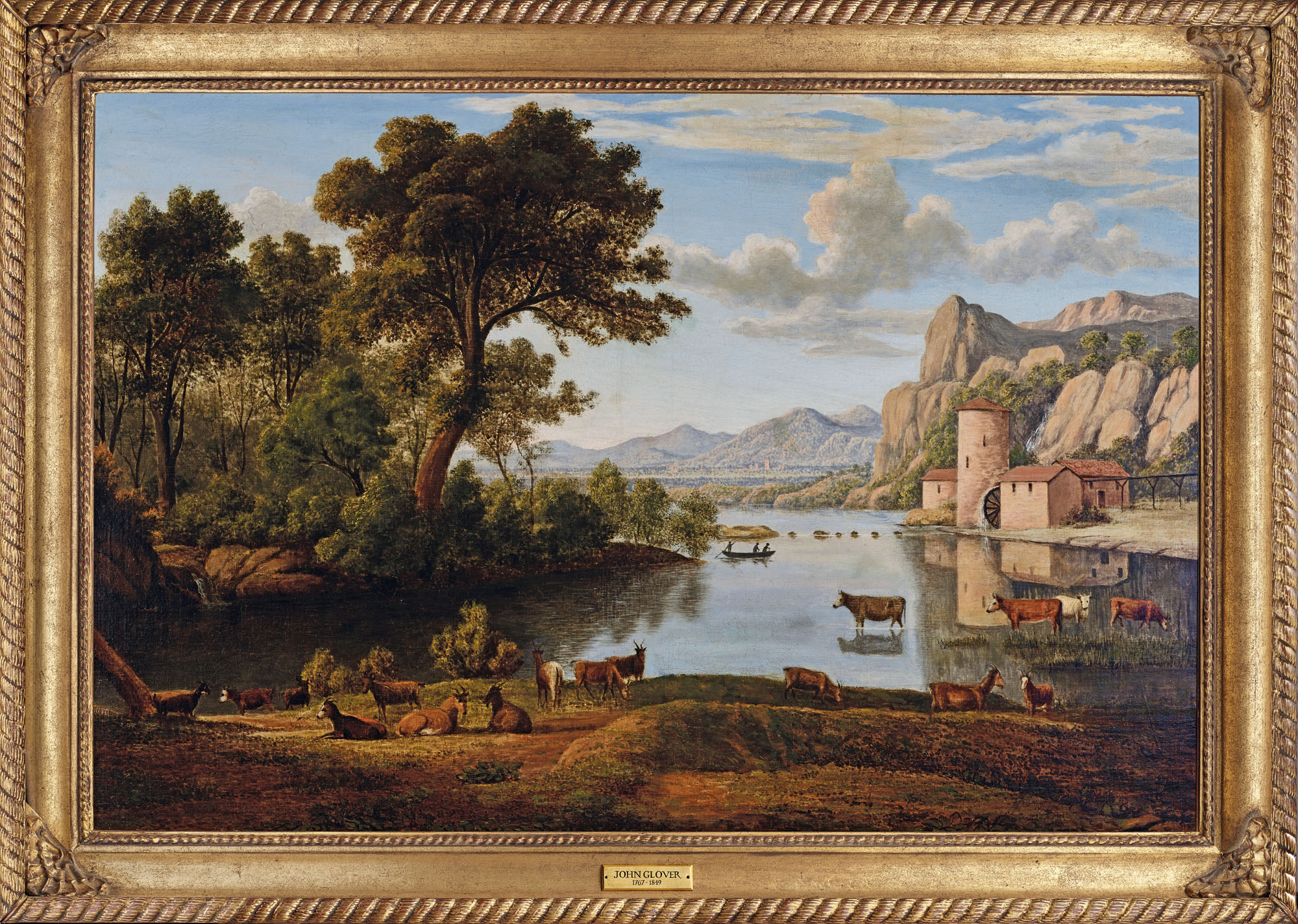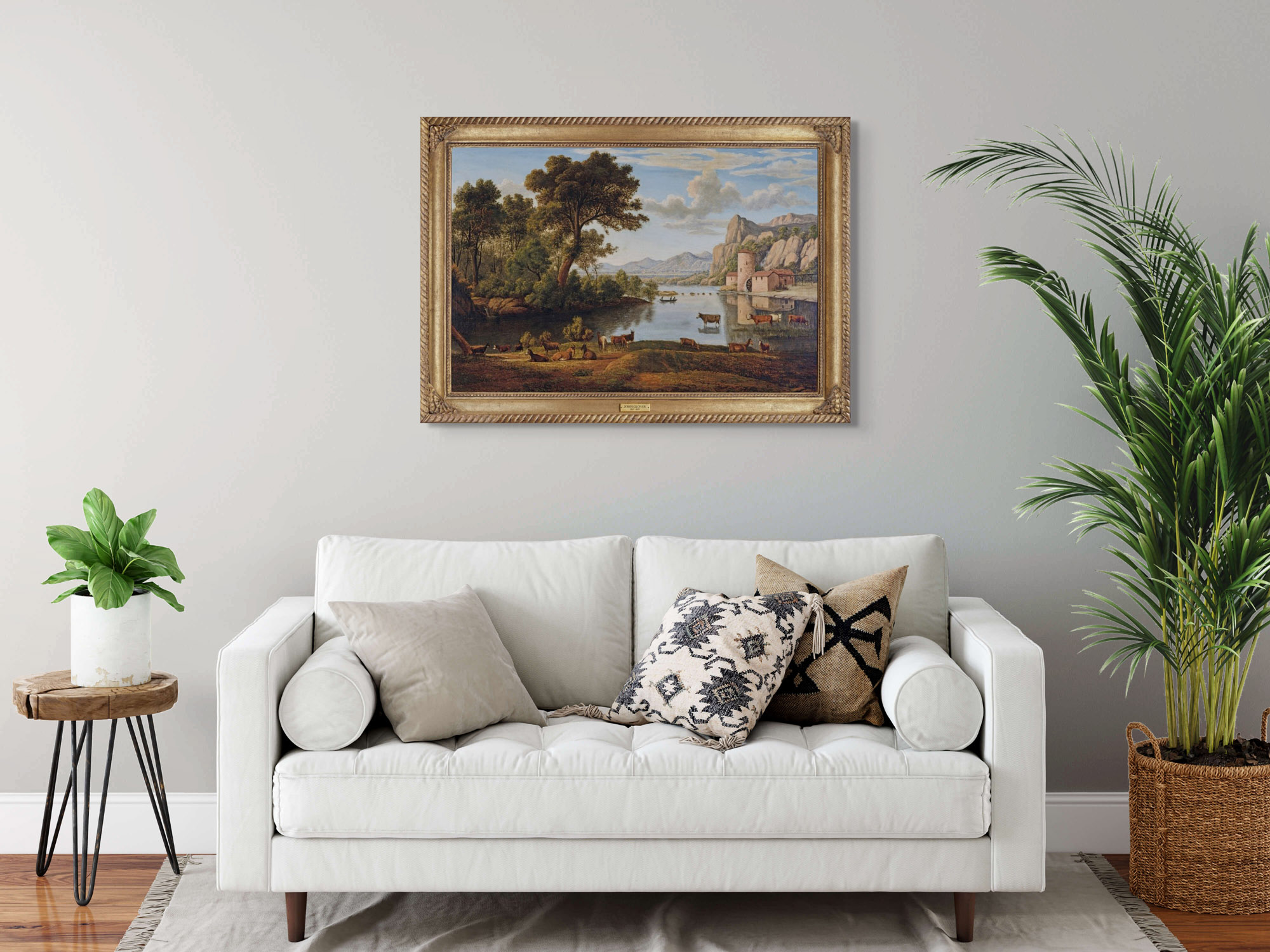JOHN GLOVER (1767-1849)
Mill on the Tiber (After Claude) c1840
Estimate: $90000 - 120000
Sold For:
$110000 hammer
$135000 inc. buyer's premium
Description
JOHN GLOVER (1767-1849)
Mill on the Tiber (After Claude) c1840
oil on canvas
76.0 x 113.0 cm; 93.5 x 129.5 cm (framed)
Provenance:
John Betts, New South Wales
Thence by descent, private collection
Bonhams & Goodman, Sydney, 5 December 2006, lot 73
Masterpiece Fine Art Gallery, Hobart
Private collection, Sydney
Related Works:
CLAUDE LORRAIN (1600-1682, French), Mill on the Tiber c1650, oil on canvas, 54.29 x 71.44 cm, Nelson-Atkins Museum of Art collection, Kansas City, purchased 1931
Estimate: $90000 - 120000
Result Hammer: $110000
John Glover was one of Australia’s most renowned early colonial artists. Born in England in 1767, Glover was a successful watercolourist and painter, depicting landscapes in the style of French Baroque artist and master of the ‘picturesque’, Claude Lorrain (1600-1682). Influenced heavily by Lorrain, Thomas Gainsborough (1727-1788) and Richard Wilson (1714-1782), Glover became well known for his, ‘idealised, atmospheric landscapes with luminous skies and harmonious compositions.’1 In 1830 Glover boarded the Thomas Lawrie for Australia, and landed in Launceston, Tasmania (then Van Diemen’s Land), the following year. He immediately set about illustrating the local landscape, which provided many opportunities for his picturesque compositions. Despite the flora and fauna presenting a new challenge - the unruly branches and leaves of the eucalyptus trees were a far cry from the ordered oak trees of England – Glover described northern Tasmania as, ‘a new Beautiful World – new landscapes, new trees, new flowers…’2
Copying Old Master paintings was a common part of 18th and 19th century fine art education. Artists saw it as a valuable way to learn new techniques and hone their skills, and Glover was no exception. Art critic William Carey described Glover, ‘like the industrious bee, he has wandered over the fields of Art, and enriched himself with her treasures. He has looked at Claude and Gaspar; at Ruysdael, Hobbima, and Waterloo, until he has felt their spirit; and they have taught him to behold Nature with their eyes.’3 As evidence to this, the 1830 sale catalogue of John Glover’s personal collection lists paintings copied from Gaspard Dughet (1615-1675), Luca Giordano (1634-1705), and Titian (c1488-1576).4
Remarkably, Mill on the Tiber (After Claude) is a copy of a Claude Lorrain painting that Glover himself actually owned. At the height of his critical and commercial success in England, Glover purchased two Claude Lorrain paintings from the aristocratic collector Lord Charles Kinnaird (1780–1826), reportedly paying a total of 1700 guineas in 1812.5 These paintings were Mill on the Tiber c1650 (Figure 1), and Landscape with a Piping Shepherd 1667 (Figure 2), both now held in the collection of the Nelson-Atkins Museum of Art, Kansas City, Missouri. Glover exhibited both pictures alongside his own works in his London solo exhibitions in 1821 and 1824. These works epitomise the theory of the ‘picturesque’ – the artistic ideal heralded by Lorrain which combines the ‘sublime’ (vistas of overwhelming grandeur and wildness that inspire both awe and fear) and the ‘beautiful’ (that which is aesthetically pleasing or pretty). Both paintings include man-made structures that are dwarfed by the tremendous majesty of the natural world.
Glover painted an exact replica of Landscape with a Piping Shepherd around 1815, and this painting Landscape with Piping Shepherd (After Claude) c1815 (Figure 3), was exhibited alongside the original in the Tasmanian Museum and Art Gallery’s 2003 exhibition John Glover and the Colonial Picturesque. It was not until later, after he had migrated to Australia and sold his Lorrains, that Glover painted the present work Mill on the Tiber (After Claude) c1840 from memory, indicating his enduring and deep appreciation of the Old Master.
The rediscovery of Mill on the Tiber (After Claude), when it appeared for sale in 2006, was deemed, ‘a matter of great art-historical interest’ by Glover expert, the late David Hansen.6 Hansen, former Senior Curator of Art at the Tasmanian Museum and Art Gallery, went on to categorise it as:
…clearly from the artist’s hand and from his Australian years. To begin with, it is painted on a canvas measuring 76 x 114 cm (2 ft 6 in x 3 ft 9 in), his ‘standard size’ in Tasmania. The bright blue sky with its separate layers of cirrus and cumulus clouds is characteristic of later Glover, as is the dappled sun and blue of the distant hills. The sinuous curves of the central tree, the ‘split-brush’ foliage, and the low light touching the edges of leaves are all typical elements of Glover’s vocabulary of landscape forms.7
It was not uncommon for Glover to return to European subjects during his later years in Tasmania, recalling them from memory or his old sketchbooks. The present work is a fascinating example of Glover’s nostalgic recollection of European Old World landscape painting, while working and living in the utterly foreign Antipodean frontier.
Footnotes
1. ‘John Glover’, Art Gallery of New South Wales, Sydney, accessed 14 February 2024, https://www.artgallery.nsw.gov.au/collection/artists/glover-john/
2. Letter from John Glover to Sir Thomas Phillipps, 15 January 1830, ms. Phillipps-Robinson b.124 f92, Bodleian Library, Oxford
3. Carey, W., A Letter to I*** A*****, Esq. A Connoisseur in London, R.W. Dean, Manchester, 1809, p.14
4. A Catalogue of all the Finished Drawings in Water Colours of Mr John Glover, Esq… also, the Remainder of his Paintings in Oil…, Walton & Mitchell, London, 1830
5. Hansen, D., John Glover and the Colonial Picturesque, Tasmanian Museum and Art Gallery, Hobart, 2003, p.135
6. Hansen, D., ‘Mill on the Tiber (After Claude)’, Fine Australian and International Art Auction Catalogue, Bonhams & Goodman, Sydney, 2006, p.56
7. Ibid.
Asta Cameron
Specialists
-

Cameron Menzies, Chairman & Head of Private Sales
cmenzies@menziesartbrands.com
+61 (0) 466 636 142 -

Asta Cameron, Art Specialist
acameron@menziesartbrands.com
+61 (0) 400 914 088 -

Clementine Retallack, Front of House Manager & Associate Art Specialist
cretallack@menziesartbrands.com
+61 (0) 478 493 026
Location
Sale & Exhibition Details
-
Auction
27 March 2024
6:30PM AEDT
1 Darling Street
SOUTH YARRA VIC 3141
artauctions@menziesartbrands.com -
Exhibition
-
Sydney
14-17 March 2024
10:00AM to 5:00PM AEDT
12 Todman Avenue
KENSINGTON NSW 2033
art@menziesartbrands.com -
Melbourne
21-26 March 2024
10:00AM to 5:00PM AEDT
1 Darling Street
SOUTH YARRA VIC 3141
artauctions@menziesartbrands.com
-



